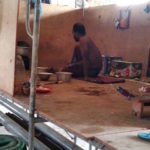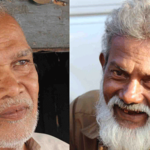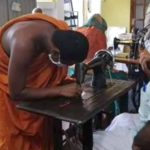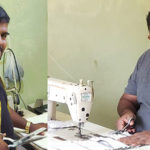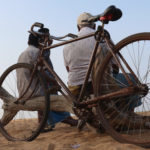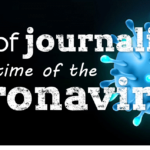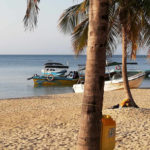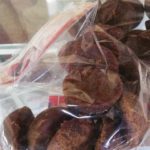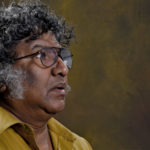Two generations of free love
Mathale Yatawatte Piyadasa dared to love a Tamil woman. His children also learned to follow their hearts beyond ethnic barriers.
“I think it was destiny when I had to go to Jaffna when JVP launched its rebellion in 1971. That journey changed me and made me a true person,” says Mathale Yatawatte Piyadasa.
Piyadasa was born in 1944 in a very remote area, in a village next to an estate that had formerly been a rubber plantation. He studied at Yatawatta Sri Veera Parakrama school, where Tamil and Muslim students were also in attendance.
Piyadasa owned land and a house. When ethnic riots broke out in 1956, however, Sihalese villagers did not allow any harm to come to their Tamil neighbors due to a strong bond.
“All who worked in the mines were Sinhalese. There were some racist undertones, but they did not come to harass people on this estate. They knew people in the village would not allow them to harass people in the estate.”
At that time, Piyadasa was considered an intellectual. He passed the Advance Level and got qualifications to enter university. “But we were poor people. My economic condition did not allow me to go to university.”
After helping a relative work in his paddy fields, Piyadasa applied to work in the police force.
“Our mother said it was an honor to the family to have a government job. I had interviews in Mathale and Kandy and after passing those, I assumed duties at Colombo Fort Police Station in May 1968.”
After three years, Piyadasa was transferred to Jaffna Police Station. Although southern Sri Lanka had experienced a rebellion in 1971, it was a period of peace in the North, including Jaffna. It was the time where Sinhala students were freely following their studies at Sinhala Maha School near the Jaffna Railway Station. Sinhalese from the south were running businesses such as bakeries and shops. Sinhalese were in government jobs and living in Jaffna with their families. People in Jaffna did not consider them as guests.
Learning a new language and a new culture
“Although there were Tamils next door, I could not speak Tamil. I was initially assigned to work inside the police station. After some months I had to go out to work. While working at bus stops, roads and associating with various people, I gradually learned Tamil.”
In 1972 Piyadasa was working as a traffic officer at the Jaffna Police Station. That was when his and Chunkamam Parameshwarie’s eyes met for the first time along a road in Jaffna. She walked daily along that road in the morning and evening and smiled at him. “At that time she was studying at Jaffna Sidhayurveda College,” remembered Piyadasa. “First she smiled and later she spoke to me. I was known in Jaffna as a policeman who works according to the rules. Maybe that was the reason for her to speak to me. When we talked, we realized our ideas were the same. It was Parameshwarie who wanted to begin a love affair.”
Standing up for love
The first opposition to came from Parameshwarie’s family, as Piyadasa is Sinhalese. But she stood her ground.
“When I told my family, they opposed it,” said Piyadasa. “But my mother and father said they believed their son would do the right thing. We had a small wedding in Jaffna. My mother and sisters came to the wedding. They asked about the dowry that should be given according to customs there. I said Parameshwarie was enough. After the wedding I came to Mathale with (my new bride). We had one problem – she did not speak Sinhala. My mother and father spoke very little Tamil.”
“Even during the time of intense war we had no problems. She was living with me in the south. We went to see relatives in Chunnakam whenever we could. They had no problem with me. I cannot be certain, but I did not get promotions. They may have been suspicious about our mix. Anyway, I did not bow down to higher ups if they treated me unfairly.”
The couple had three children: a daughter and two sons.
“We did not have a problem with the identities of our children. They were allowed to follow customs from both of us. We thought they would choose what they want. We had both Hindu and Buddhist traditions at our home. When Parameshwarie died, her funeral was held according to both traditions.”
The couple’s daughter, Krishanthi married a Tamil from Jaffna and now live in Norway. Their second son fell in love with a Muslim girl in Walimada, – they live in the United States. The youngest son fell in love with a Sinhala girl in Wallawaya and Piyadasa gave his consent.
“Love is about staying together. I will also die after some time. But when I look at the things I lost, I have gained much more than that,” he said, clutching a photograph of himself with his late wife Parameshwarie.

